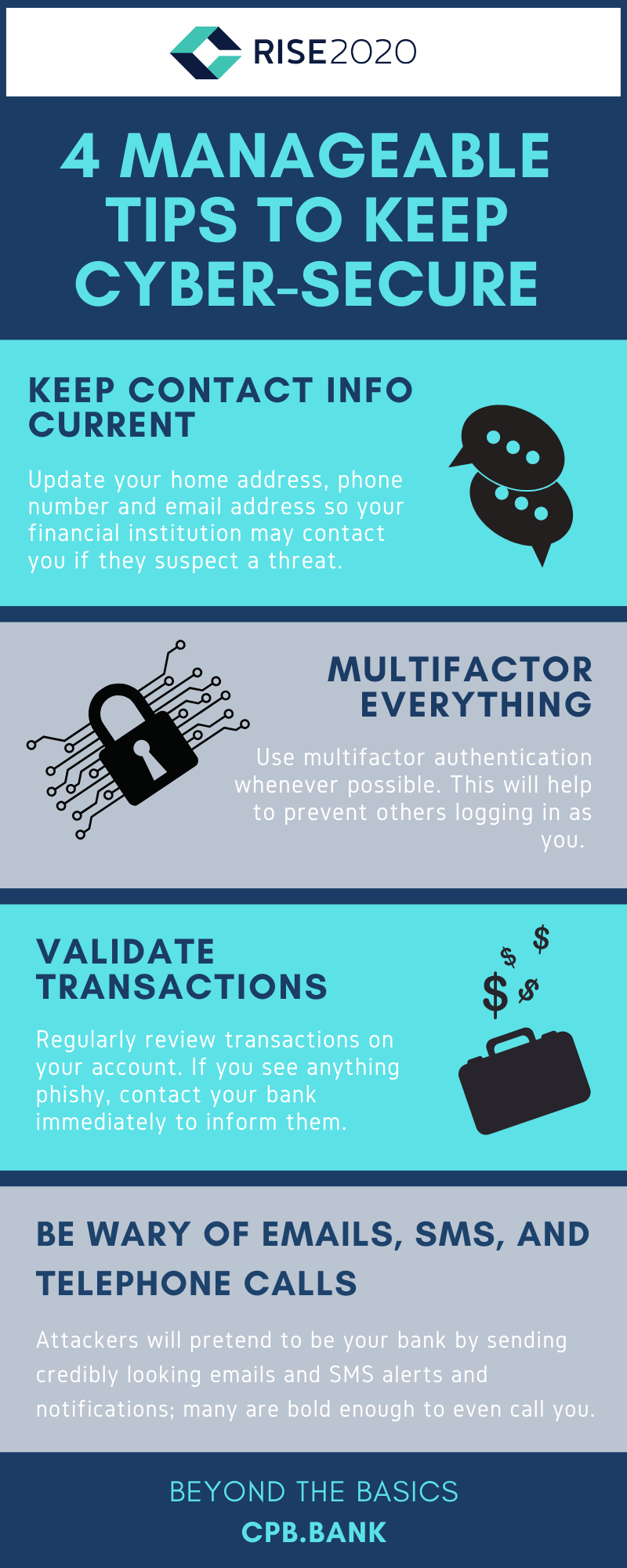Resources
Resources
Manageable Tips to Keep Cyber-secure

By: Manny Edmondson, SVP, Chief Information Security Officer
From May through July of 2017, 142 million American consumers were exposed in a data breach of a major credit reporting agency, compromising consumers’ names, social security numbers, birth dates, and addresses. According to the U.S. Census, the 2017 population of adults in the United States was approximately 251.6 million. Approximately 56% of the adult population had their personal information compromised.
In 2018, customer information involving everything from name, email, phone number, date of birth to online profile information and passport numbers were compromised across the following data breaches: Starwood-Marriott (500 million customers); Under Armour (150 million customers); and Facebook (87 million customers).
It seems that almost daily we hear of yet another breach of information or a cyberattack. Businesses of all industries are susceptible to attacks and the theft of customers’ private information whether that be through a website, malware (which penetrates your computer), or someone sifting through private files. We’re told to be safe while online, whether that is when we use social networks or are just checking email. But what does that actually mean?
At Central Pacific Bank, we work in a compliance-minded environment. This means that we work with our customers’ privacy and the protection of their personal information at top of mind. Our technology systems are regularly tested against the latest cyberattacks and our employees are thoroughly trained how they can work to prevent a data breach from impacting our customers. We encourage you, our customer, to follow these manageable practices to avoid cyber and financial attacks:
- Keep your contact information current. By keeping your phone numbers, email address, and home address up-to-date, you will help CPB mitigate potential threats. When we see a transaction that looks phishy, we can alert you to confirm the authenticity of the attempted transaction.
- Multifactor everything. Protect yourself and your online identity. Whether it’s your CPB bank account or social media, always utilize multifactor authentication. Multifactor authentication means that once you have entered your password, you maybe prompted to enter an access code, answer challenge questions, or approve a transaction via your email or cell phone.
- Validate your transactions. Regularly check your CPB accounts and transactions. If you notice anything out of the ordinary, notify us by phone at 1-800-342-8422 or by visiting one of our branches. While we employ technology to detect for unusual transactions, you know better than anyone what transactions are legitimate, and which are not.
- Be wary of emails, SMS, and telephone calls. Attackers are malicious tricksters. They will pretend to be your bank by sending credible looking emails, SMS alerts, and notifications; many are bold enough to even call you and may be able to trick your caller ID so that the call appears to be coming from your bank. Attackers go to great lengths, all with the hopes of tricking you into selecting the web links or providing your passwords and PINs through their well-crafted messages.
While there is no guaranteed way to avoid cyberattacks or breaches of private information, by staying vigilant and questioning messages or offers that seem skeptical – you can reduce your chances of falling victim to a cybercriminal.
For additional information on how you can protect your personal data online, visit https://www.consumer.ftc.gov/articles/0272-how-keep-your-personal-information-secure.




 Share
Share